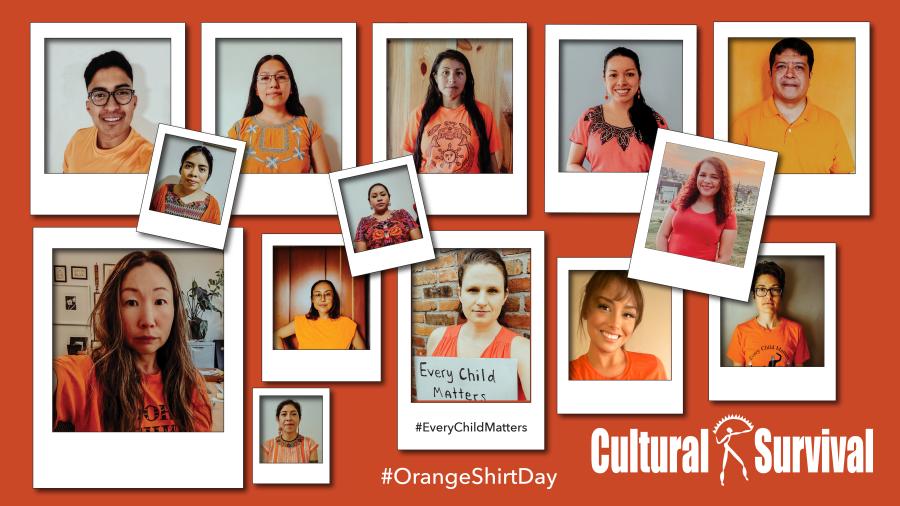Students often ask what they, as individuals, can do to help native peoples and to promote cultural survival. What follows is a brief discussion of one project that in a small but meaningful way provides an answer within an environmentally acceptable framework. The program was begun in response to requests for feathers from Pueblo Indians of the American Southwest; it was not imposed upon them.
Among the native peoples of North America, some of the oldest continuously occupied settlements are those of the Pueblo Indians of the American Southwest; for example, Acoma in western New Mexico and the Hopi village of Oraibi in northeastern Arizona have been inhabited for 1,000 years.
Pueblo emergence myths recall the arrivals of these peoples into this world, and birds play a central role in most of these tales. A series of birds provided ritual magic and guidance for the emergence of the Hopi, and a shrike finally located the hole in the top of the underworld through which the Hopi emerged into this world (Nequatewa 1936). Birds also figure prominently in Hopi creation myths, in which the mockingbird, for instance, is responsible for the multiplicity of languages in the world (Nequatewa 1936.
Birds are similarly important among the other Pueblos, where they are prominent in the mythology and symbolize aspects of social structure. Eagle clans are found among most Pueblos; macaw/parrot clans are present among the Hopi, Zuni, and Keresans; and crow, dove, hawk, roadrunner, turkey, and woodpecker clans, among others, are also found in one or more Pueblos. Other ceremonial associations include the use of hawks to symbolize the sacred clown societies among several eastern Pueblos.
Birds were once widely used for food, but the decline in hunting makes them less important today. The Hopi still capture a few eagles for ceremonial use - a legal activity, although one opposed by conservationists - and other pueblos also traditionally caught and kept eagles. A wide variety of feathers is used for pahos (prayer sticks), a common type of ritual offering. (Tyler [1979] provides a summary of Pueblo beliefs and practices regarding birds.)
Today, eagles, hawks, turkeys, macaws, and certain parrots are probably the most important birds in pueblo ceremonialism, although specific Pueblos may place particular importance on one or more other birds for a given ritual. Turkeys, once domesticated for food and feathers (from which exceptionally warm robes were made), are no longer a dietary staple or raised for clothing, but they are still important in Pueblo religious practices. The ritual importance of birds continues ancient traditions; ceremonial objects incorporating feathers, bones, and bird images are present at numerous prehistoric Pueblo sites. Deliberate burials of macaws and turkeys are found, and macaws, parrots, eagles, and other birds are prominently featured in kiva murals.
Except for the macaws and the thick-billed parrots, all these birds are indigenous to the Southwest. Archaeological evidence indicates that prehistoric peoples throughout the Southwest imported both live macaws and macaw feathers from Mexico, and probably parrots as well.
The scarlet, military, and blue-and-gold macaws are native to Mexico and farther south. They were formerly found over a much wider territory than today, but much of their natural habitat is being rapidly destroyed. Although several possible sources exist for the macaws found in the Southwest, Casas Grandes in Chihuahua, Mexico, was probably the main breeding and distribution center, particularly for the scarlet and military macaws (DiPeso 1974). Significantly, less than 3 percent of all macaws found at southwestern sites were of breeding age at the time of death, and there is no evidence of any females within the sample - so "no breeding of these birds can be shown to have occurred in the Southwest" (Hargrave 1970:53). The Mexicans kept absolute control over the supply of both live birds and feathers.
We do not know specifically how macaws were used prehistorically, but their wide distribution and numbers indicate they were important. Historically, and today, macaw feathers are used to decorate ceremonial objects. In addition to feathers from scarlet and military macaws, I have observed ritual use of blue-and-gold Macaw feathers, and feathers have been requested from all three species. For some Pueblos, macaw feathers symbolize the sun and are necessary for solar ceremonies. Multihued macaw feathers may represent a sun-rain combination. The long tail feathers, in particular, are needed for certain religious paraphernalia such as the standards carried at corn dances. Both tail and wing feathers are said by some to represent the sun's rays. Some Pueblos use smaller macaw feathers for pahos, and a few Pueblos use yellow macaw feathers in marriage rituals.
Since the first Spanish entrada in 1539, the Pueblos have been subjected to sustained, often intense, and sometimes violent acculturative pressures. It is not surprising, then, that much of their "traditional" culture has disappeared or that their religious systems are markedly attenuated from what existed even as recently as 50 years ago. It is perhaps more surprising and remarkable that the Pueblos have retained so much of their native religions despite these pressures. Nevertheless, major aspects of Pueblo religions continue to be lost, often rapidly. In some cases, the unavailability of necessary ritual materials such as particular feathers contributes to this cultural loss.
Macaws
Macaws are unique for several reasons: they have been used for more than 1,000 years and so are integral to Pueblo religions, they are not native to the Southwest and had to be imported, and the Pueblos could not breed them.
All macaws are now endangered species (Nilsson 1981) due to the destruction of their natural habitats and the high value of both birds and feathers, which makes capture and sale profitable. Macaws do breed in captivity, but hunting and trapping are less costly so long as birds are available. Their numbers in the wild continue to decline.
Macaw feathers are valuable. The Pueblos pay as much as $60 for a single center tail feather, and other feathers sell for $1 to $50 depending upon type, color, and condition. The high prices make smuggling profitable. Live birds can be sold to unscrupulous dealers; dead birds can be plucked and their feathers sold. Even a mortality rate often in excess of 80 percent for illegal shipments into the United States does not offset this profitability because of the large market for feathers. These high mortality rates further endanger the species. Unlike the situation with other endangered animals, stories in the popular media (e.g., Latici 1988) have done little to improve the macaws' lot.
Pueblo peoples have requested macaw feathers since I first began working in the Southwest more than 20 years ago. Even when feathers were available commercially, the Pueblos often could not afford them, and rituals requiring macaw feathers suffered accordingly. The problem was twofold: provide feathers to the Pueblos, and preserve native macaw populations. It took 15 years to devise a workable solution.
In 1982, I first approached local (Illinois) macaw breeders and owners to ask for their feathers. Eventually some agreed to provide them. Then a former student began working at the Brookfield Zoo near Chicago and began sending macaw feathers to me. The Louisville Zoo began sending them in 1983; shipments from other zoos, owners, and breeders followed. By the end of 1990, more than seven years after its inception, this program will have distributed more than 800,000 macaw feathers to more than 20 Pueblos - all free of charge. I do not purchase feathers (though postage costs are reimbursed if requested), and I do not sell them. The only way to stop smuggling is to flood the market with free feathers.
All feathers are from birds that are molting or that died of natural causes. The feathers are sent to the Pueblos on request and as available. The program has made a difference. It is now the sole supplier of macaw feathers for several Pueblos, and the number is growing. Those aspects of Pueblo religion that require macaw feathers are continuing. Although it can not yet be reliably determined how this has affected smuggling, the fact that some Pueblos now receive all their feathers from this program and that most Pueblos receive some feathers from it has reduced commercial demand. This in turn should lessen the market pressure that affects native macaw populations and contributes to their endangerment. In the long run, however, the natural habitats must also be preserved for macaws to survive in the wild.
Turkeys
Turkeys have been domesticated by the Pueblos for more than 1,000 years. Their numbers have declined since World War II, probably as part of the general shift from farming to wage labor economics. Few turkeys are seen today in the villages, and wild turkeys populations have also declined. While demand for feathers remains high, supply in the Southwest, perse, is low.
Wild turkeys are plentiful in Illinois and Missouri, and are hunted regularly. I obtain 5,000 to 10,000 feathers each year (since 1983) through local newspaper ads and notices placed at hunting supply stores and at taxidermists' shops. Again, I do not pay for feathers; they are given to me by hunters, taxidermists, and zoo keepers, with a few coming from road kills. All turkey feathers were distributed free to about a dozen Pueblos. This helps to preserve those aspects of Pueblo religions that require turkey feathers and also utilizes parts of the birds that might otherwise be discarded because of the lack of a commercial market for the feathers.
Eagles and Hawks
Most of these ritually important birds are endangered or threatened; all are scarce. The Pueblos are permitted to capture a few eagles and other raptors for religious use, but declining populations in the Southwest limit the number of birds and feathers available. I am often asked for eagle and hawk feathers.
I cannot legally have these feathers and so cannot distribute them. However, I have been able to help the Pueblos obtain them by assisting them in completing the forms necessary to receive feathers from the federal repository. This has provided the needed feathers, thus reducing Pueblo reliance on wild sources and thereby lessening predation on these native bird populations. Again, this helps to preserve Pueblo religions and, simultaneously, to conserve native bird populations.
This program is ongoing. More sources of macaw and other feathers are needed in order to provide feathers free to all who request them. Only when the Pueblos have all the feathers they need and the smuggling of macaws ceases will this program be considered ultimately successful.
Notes
1. Macaws and parrots are different species within the order Psittaciformes. They are sometimes confused in the ethnographic literature, and the tow terms are used interchangeably by some writers. My experience is that Pueblos neither confuse the terms nor the species.
2. Kivas are ceremonial chambers, either freestanding or incorporated into room blocks.
3. Here and later I will not be more specific in accordance with the Pueblos' wishes regarding public discussion (publication) of sacred matters.
References
DiPeso, C.C.
1974 Casas Grandes: A Fallen Trading Center of the Gran Chichimeca. Dragoon and Flagstaff, AZ: The Amerind Foundation and Northland Press.
Hargrave, L.
1970 Mexican Macaws, Comparative Osteology and Survey of Remains from the Southwest. Tucson: Anthropological Papers of the University of Arizona, Number 20.
Latici, E.
1988 Bird Buyer Beware! Parade Magazine (May 8):4-6.
Nequatewa, E.
1936 Truth of a Hopi. Flagstaff: Museum of Northern Arizona.
Nilsson, G.
1981 The Birth Business: A Study of the Commercial Cage Bird Trade. 2nd ed. Washington, DC: The Animal Welfare Institute.
Tyler, H.A.
1979 Pueblo Birds and Myths. Norman: University of Oklahoma Press.
Article copyright Cultural Survival, Inc.



